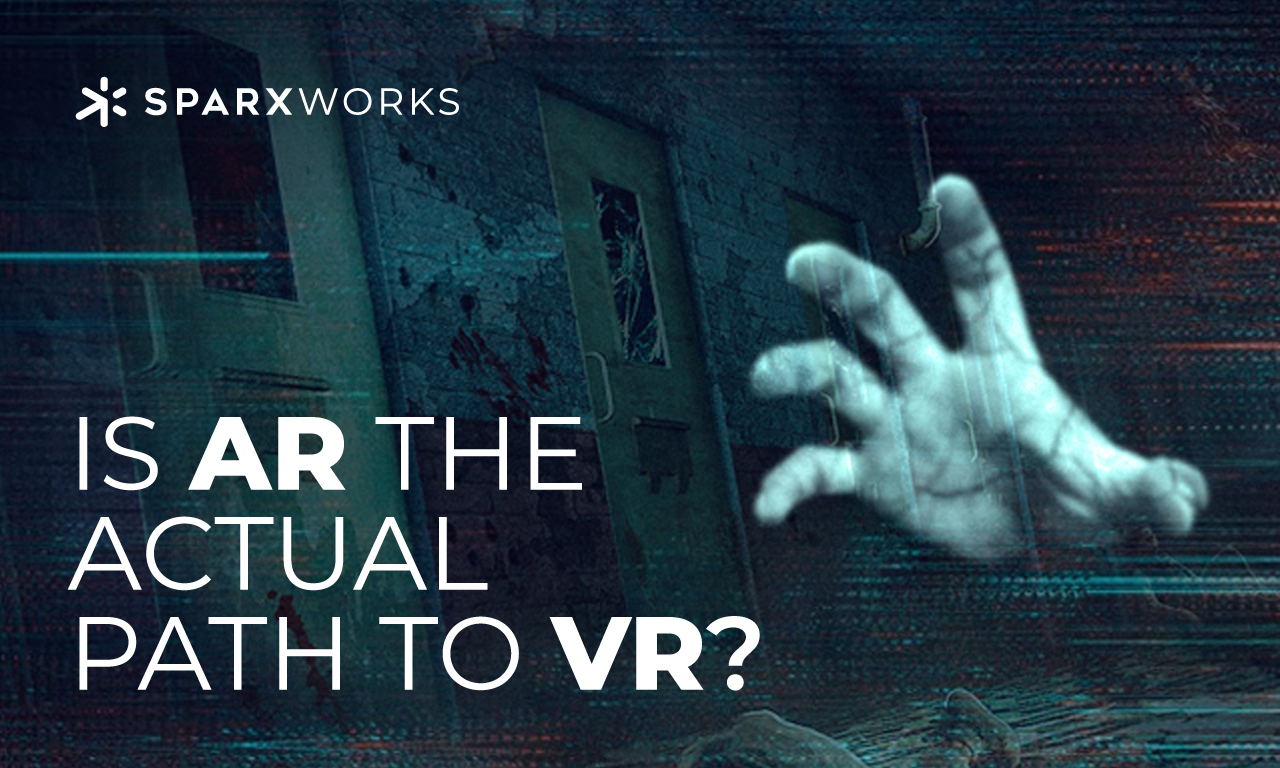Is Augmented Reality the Actual Path to Virtual Reality?
30 Aug 2021, Posted by in Technologies
Is AR the road to real VR? If you have asked yourself the same question, please comment or share your thoughts with this post. I am working on two (very different) immersive projects and would love to hear what other people are working on, AR or VR, think about this. Hear me out and let me share briefly what I am doing and see what you think
I am working on an AR project, a “life-size-location event,” a “Haunted House.” It is a real size environment; it will need to be experienced outdoors, on a field, gym, or some other area where you can fit a house J (baseball, football fields are great choices).
As we’ve worked on the project, the journey has been incredible. I have often stopped and asked our team, “Wait, are we still doing augmented reality? Or are we now doing VR?” It was both a moment of reflection and realization. We can deliver a closer experience to the “Holodeck from Star Trek” in terms of the user experience with AR—you can walk, interact with objects, digital elements, and characters, etc.
Don’t get me wrong. I love the Oculus VR products and their super talented developers; they make fantastic stuff, too. But in terms of the overall experience, I would suggest that AR is indeed the true path to VR. With 5G fast growth and multi-access edge computing, we’ll be able to deliver a unique realistic experience of the same quality as a PlayStation or Xbox. Furthermore, you will no longer be bound to a chair or small room, or computer for that matter.
I, of course, started to think about the possibilities for education, retail, architecture, hospitality, wellness, and entertainment, to name a few natural fits for AR. For example, take a walk through the city of Troy, or observe the battle of Waterloo, Conduct a science experiment, and so much more. Combined with props, you can have a completely interactive experience that includes touch in addition to an audio-visual experience. We have been able to also experiment with a store, apartment, and even a stadium.
Our second project I can tell you more about. It is a small micro-game. I am releasing it next week (it is free). This is a very light shooter game. As I played the game, I became as immersed in it as when I played simple games on a console-based or mobile device, except that I was an active participant this time. I also played with others (I was at a park), which made it fun and social, something I think we all need. Since we were outside, we were also safe.
Please take a minute to share your experiences if you are working on similar initiatives; I’d love to hear from you.
If you would like to know more about our augmented reality services, please contact us through our website www.sparxworks.com. Also, we are going to be demonstrating various immersion concepts this November 15 at www.ARExperience.us. This experiential conference will bring together the top brands and agencies with the hottest companies and services in AR in a collaborative way to foster the growth of our AR community.
We look forward to seeing you there at the Faena Hotel in Miami beach.





I think you’re absolutely right – AR and VR will ultimately converge, and we’ll get used to the physical and the digital worlds (both of which are “real” worlds, of course) being integrated to greater or lesser extents, depending on the experience. If I’m lactose-intolerant and in a grocery store, I only perhaps need occasional digital flags highlighting the products I should or shouldn’t buy. But if I’m in a haunted house experience like you describe (and I want to try!), then much more digital immersion and occlusion of the physical world is necessary. The question is whether you achieve this flexibility to slide between the physical and digital worlds to varying extents with a headset that is showing you the physical world directly, and the digital is an overlay, or if you’re in a headset giving you a passthrough video view of the physical world, and the digital elements are integrated with that. At the beginning, certainly, integrating digital content with passthrough video will certainly be easier. But the heavier form factor of headsets necessary to give that experience will ultimately count against the passthrough option. Long-term, I see slim, direct world-viewing AR glasses that have the ability to create a full range of digital overlays as being our main devices. Sure, that’s a million miles from where we are now – but who could have imagined our current smartphones while looking at an early telephony-only mobile phone brick in, say, 1993?